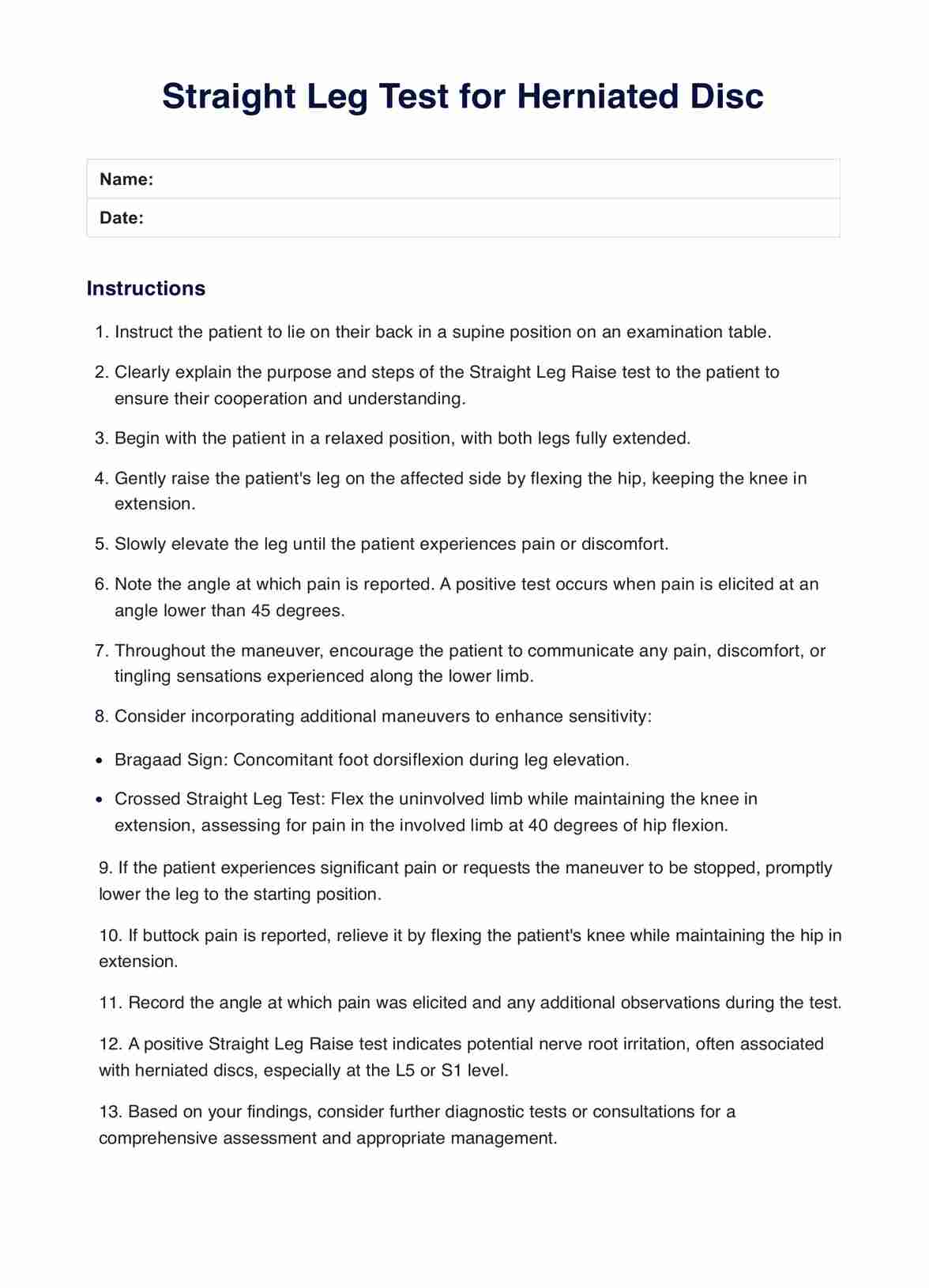The straight leg raise test involves lifting one leg while lying on your back to check for signs of nerve root irritation. The crossed straight leg test is a modification that involves crossing the legs at the ankles and performing the same movement.

Straight Leg Test for Herniated Disc
Download a free Straight Leg Test for Herniated Disc template. Learn how to perform the test and streamline your clinical documentation.
Straight Leg Test for Herniated Disc Template
Commonly asked questions
Limited hip flexion can indicate the presence of a herniated disc. During the physical assessment, if a patient experiences increased pain or discomfort when attempting to flex the hip, it could be a sign of lumbar nerve root compression or severe nerve root irritation, often associated with herniated discs.
Yes, herniated discs can cause severe nerve root irritation, characterized by sharp or burning pain radiating down the leg, weakness, or numbness in the affected area. Diagnostic tests, such as MRI or CT scans and physical exams, are used to identify nerve root irritation and its severity.
EHR and practice management software
Get started for free
*No credit card required
Free
$0/usd
Unlimited clients
Telehealth
1GB of storage
Client portal text
Automated billing and online payments











